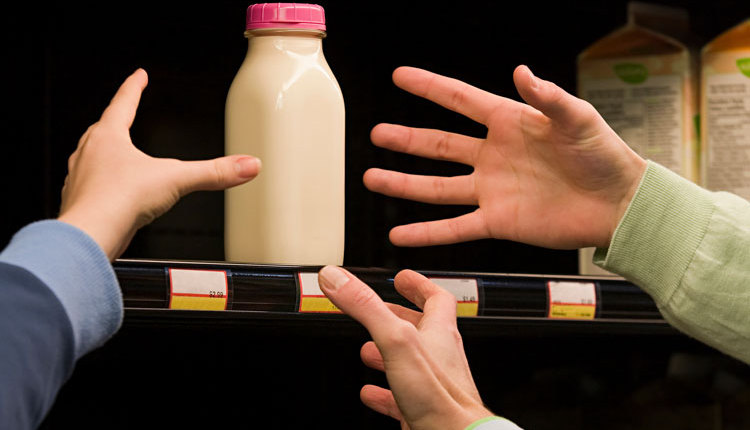
During the height of COVID-19 panic buying, pictures flooded news outlets and social media pages of empty grocery store shelves — and dairy cases. Dairy farmers watched as consumers rushed to stock up on milk, cheese, butter, and yogurt. In too many places, there was hardly enough to go around, but that wasn’t just for milk’s nutritional qualities.
“We ran toward food when we were safer at home and shut in,” said economist Mark Stephenson on the September 23 Hoard’s Dairyman DairyLivestream sponsored by World Dairy Expo. “Food was a comfort,” he continued.
John Talbot further detailed how food decisions developed during the pandemic. “I think one of the biggest [consumer] insights we’ve seen is the broadening of our definition of health into much more of a holistic wellness idea that combines both physical health and emotional health,” said the CEO of the California Milk Advisory Board (CMAB). “We know the nutritional side really well, but we’re learning more and more now about the impact that the emotional health has on purchase behavior, on food preferences, and so on.”
Dairy benefitted tremendously from that desire for familiar, reliable food. In parts of March, weekly dairy sales were nearly half a billion dollars higher than normal.
CMAB began using the emotional value of food as a factor in their promotional efforts. Breakfast, for example, not only has the potential to be a nutritious, dairy-rich meal, but it can provide valuable family time when eaten together. Together, those are two of the main tenets of the checkoff group’s “The Day Can Wait” media and advertising campaign to encourage taking time for breakfast.
Comfort food in uncomfortable places
Stephenson reminded that dairy sales always need to meet consumers where they are. “Right now, they’re at home,” he added. Dairy for breakfast, cooking, and baking is feasible — and comfortable.
Dairy Management Inc. CEO Tom Gallagher echoed the need to meet consumers where they can consume dairy. People returning to dairy products during the pandemic has been a great reminder of their value, he said. “It just goes to show you, for a lot of people, there isn’t a philosophical problem with dairy products,” he affirmed.
“The issue is, for years, as they moved away from home, certain products, particularly fluid, didn’t meet the consumer where they were,” Gallagher identified. “All the messaging in the world, all the trust they have in fluid milk, all the knowledge of nine essential vitamins (nutrients), isn’t going to matter if the product isn’t being served in some fashion where you are.”
In that arena, Gallagher identified opportunities in on-the-go drinks and foods consumers required in the pre-pandemic economy to be displaced with dairy in the home and out. “If we give them the product where they are, they will consume it,” he stated. Of the pandemic, he said “It’s reinforced that people want dairy.”
An ongoing series of events
DairyLivestream will air twice each month for the remainder of this year. The next broadcast on Wednesday, October 7 at 11 a.m. CST will focus on “Can we sell that cheese?” Each episode is designed for panelists to answer over 30 minutes of audience questions. If you haven’t joined a DairyLivestream broadcast yet, register here. Registering once registers you for all future events.








